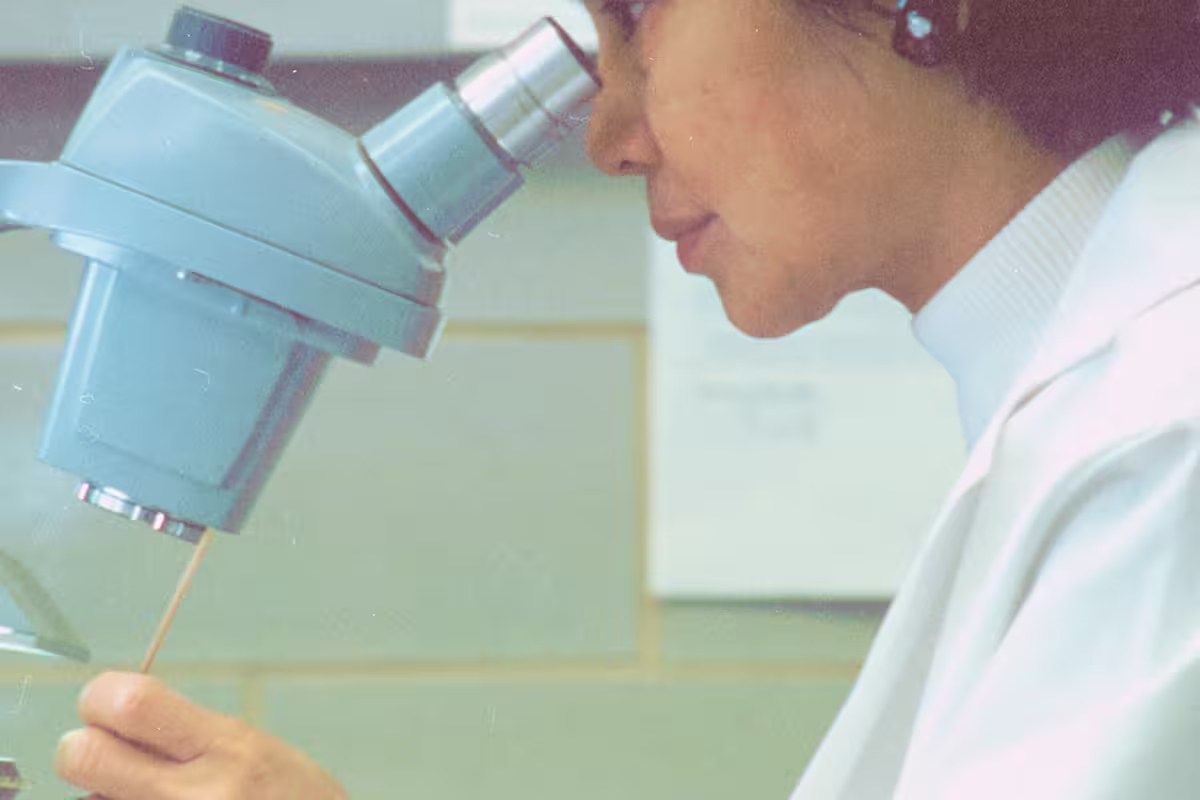

UTI vs Chlamydia: How to Tell Them Apart
Learn to tell UTI vs chlamydia by symptoms like burning, urgency, and discharge, plus testing methods and whether you can have both infections at once.
Words by Olivia Cassano
Scientifically edited by Dr. Krystal Thomas-White, PhD
Medically reviewed by Dr. Kate McLean MD, MPH, FACOG
Two very common (but different) conditions are urinary tract infections (UTIs) and chlamydia. Though they might share a couple of symptoms, these infections are caused by different factors and need different treatments. Let’s dive into what each of these infections are, how to tell them apart, and what you can do about them.
What is a UTI?
A urinary tract infection is a bacterial infection in any part of your urinary system, including the urethra, bladder, or kidneys.
Urinary tract infections are typically caused by bacteria — particularly Escherichia coli (E. coli) — from the skin or rectum entering the urinary tract, but many other bacteria can cause UTIs as well. This can happen for several reasons:
- Sexual activities: Penetration can introduce bacteria into the urethra.
- Birth control: Spermicides, diaphragms, and certain types of birth control can increase the risk of urinary tract infections.
- Hormone deficiency: Lower estrogen levels can cause changes in the urinary tract that make it more vulnerable to infections.
Women are also more prone to urinary tract infections because the urethra is shorter than men’s, allowing bacteria to reach the bladder more easily.
Common UTI symptoms include:
- A burning sensation when you pee: This is one of the most common signs.
- Frequent urge to pee: You may feel like you constantly need to pee, even if little to nothing comes out.
- Cloudy, dark, or strange-smelling urine: If your pee looks unusual or has a strong smell, this could be a UTI.
- Pelvic pain: You might experience discomfort in your lower abdomen, especially around the bladder area.
- Fever: This happens in more severe cases, especially if the infection has spread to the kidneys.
How to treat UTIs
Most urinary tract infections can be cleared up with a short course of antibiotics prescribed by a doctor — typically, trimethoprim-sulfamethoxazole, nitrofurantoin, or ciprofloxacin.
Over-the-counter medications like ibuprofen may not treat a UTI, but they can help with the pain or discomfort.
Drinking plenty of water also helps. Staying hydrated makes you pee more frequently and helps flush bacteria from the urinary system. It’s also a good idea to eliminate anything irritating your bladder until your UTI clears up. This includes caffeine, alcohol, spicy foods, and artificial sweeteners.

Recurrent symptoms? Get Evvy's at-home vaginal microbiome test, designed by leading OB-GYNs.
What is chlamydia?
Chlamydia is a sexually transmitted infection (STI) caused by the bacterium Chlamydia trachomatis. It’s one of the most common sexually transmitted infections, but it often goes unnoticed because it frequently presents no symptoms, especially in women.
Chlamydia is passed through vaginal, anal, or oral sex with someone who is infected. Since it often doesn’t cause symptoms, many people don’t realize they have it, which increases the risk of passing it on to others.
Common chlamydia symptoms include:
- Abnormal vaginal discharge: Discharge can present as white, yellowish, or foul-smelling.
- Painful urination: Similar to a UTI, you may feel a burning sensation when you pee.
- Lower abdominal pain: This can be a dull ache or more severe cramping.
- Bleeding between periods or after sex: Unusual spotting or bleeding can be a sign of chlamydia.
- Pain during sex: You might experience discomfort during penetrative sex.
How to treat chlamydia
Chlamydia can be effectively treated with antibiotics. The most commonly prescribed antibiotics for chlamydia are doxycycline (taken for seven days) and azithromycin (usually taken as a single dose). Make sure to finish the entire course of medication, even if you start to feel better before it's finished.
You’ll need to avoid sexual contact while being treated to prevent spreading the infection to your partner. Speaking of which, your partner(s) should also be tested and treated to avoid reinfection.
How do you know if it's a UTI or chlamydia?
UTIs and chlamydia can share symptoms like painful urination and abdominal discomfort, but they differ in important ways — including cause, transmission, discharge, and diagnosis.
A UTI is usually caused by bacteria like E. coli entering the urinary tract and is not sexually transmitted, though sex can sometimes trigger it. Chlamydia, on the other hand, is a sexually transmitted infection (STI) caused by Chlamydia trachomatis.
UTIs tend to cause more obvious urinary symptoms, like urgency, burning, and cloudy urine. Chlamydia is often silent, but when symptoms do occur, they may include unusual discharge, spotting, and pain during sex.
Here’s a quick comparison:
.jpg)
Can you have a UTI and chlamydia at the same time?
It’s definitely possible to have a UTI and chlamydia at the same time, which is known as a co-infection. Since both can lead to uncomfortable symptoms like painful urination and abdominal discomfort, it’s easy to mix them up. That’s why thorough testing is so important — if only the UTI is treated without catching chlamydia, the STI could go untreated, which might lead to more serious issues like pelvic inflammatory disease (PID) or even infertility.
When you see a healthcare provider, they might suggest a urine culture to check for a UTI, along with a nucleic acid amplification test (NAAT) to detect chlamydia. If it turns out both infections are present, treatment usually involves two different antibiotics, each designed to tackle the specific infection. Just remember to finish the full course of any prescribed medication, and it’s also a good idea to let your partners know if you’ve been diagnosed with an STI, so they can get tested and treated as well.
How to test for UTIs and chlamydia
A UTI can be diagnosed through a urine test, which detects the presence of bacteria and white blood cells. Your doctor will often test your urine for signs of infection if you report UTI symptoms.
Chlamydia testing usually involves a vaginal swab or a urine test. The swab can be done during a pelvic exam or at home with a self-testing kit. It's recommended that sexually active women under 25, or women over 25 with new or multiple partners, get tested regularly for STIs.
If you’re experiencing symptoms like pain when you pee, abnormal discharge, or pelvic pain, it’s always a good idea to see a healthcare provider.
You can test for both chlamydia and vaginal bacteria that may increase the risk of UTIs with Evvy’s Vaginal Health Test. Our at-home vaginal microbiome test uncovers over 700 bacteria and fungi with a single vaginal swab, including those related to UTIs and four of the most common STIs. Eligible users can also access personalized care (including prescription medications) developed by a healthcare provider.
Can a UTI turn into chlamydia?
A UTI can definitely be uncomfortable, but the good news is that it can’t turn into chlamydia. They’re two completely different infections caused by different types of bacteria.
A UTI usually happens when bacteria like E. coli get into the urinary tract, often from the skin or bowel. Chlamydia, on the other hand, is an STI caused by a specific bacterium called Chlamydia trachomatis.
That said, the two can feel similar at first. Both can cause a burning sensation when you pee, a frequent urge to pee, and lower belly discomfort. Because of that overlap, it’s easy to mistake one for the other. If you're sexually active and experiencing UTI-like symptoms that don’t go away after antibiotics, or if they keep coming back, it’s worth getting tested for sexually transmitted infections — including chlamydia — just to be safe.
The bottom line: a UTI won’t turn into chlamydia, but it’s totally possible to have both at the same time or to misread one for the other. So if something feels off down there, don’t hesitate to check in with your doctor. A quick test can give you peace of mind and get you on the right treatment fast.
FAQ
How to tell if it’s a UTI or chlamydia?
Differentiating between a UTI and chlamydia can be confusing due to shared symptoms.
For a UTI, expect symptoms like burning during urination, a frequent urge to urinate, cloudy urine, and lower abdominal discomfort. UTIs typically don’t cause changes in discharge or pain during sex. Chlamydia, meanwhile, may present few or no symptoms. When symptoms do appear, they include painful urination, changes in discharge (such as yellowish color), spotting between periods, and pain during intercourse. The most reliable way to identify the issue is through testing, like the Evvy Vaginal Health Test, which can detect bacteria linked to both conditions.
Does chlamydia smell like a UTI?
Unlike UTIs, which sometimes cause pee to have a strong, ammonia-like smell, chlamydia is often called a "silent" infection since it usually doesn’t show any symptoms, especially early on. If symptoms do appear, you might notice a mild vaginal odor and some unusual discharge, but it's generally not the same strong smell you’d get with a UTI. Both infections can cause discomfort while peeing or in your pelvic area, so it’s understandable if they get mixed up! If you're experiencing any odd smells, discharge, or pain, it’s a good idea to get tested for both. Catching these issues early is important for getting the right treatment and avoiding complications.
Can a UTI be misdiagnosed as chlamydia?
If you rely on symptoms alone, then yes, a UTI can sometimes be misdiagnosed as chlamydia, and vice versa. However, it’s highly unlikely to confuse the two infections if you get tested. Rather than self-diagnosing, see your healthcare provider if you’re experiencing any unusual symptoms, such as painful urination, pelvic pain, or unusual discharge.
If you have chlamydia, will you test positive for a UTI?
No, if you have chlamydia, you won’t automatically test positive for a UTI. They’re two separate infections caused by different types of bacteria. A UTI is usually caused by bacteria like E. coli that infect the urinary tract, while chlamydia is an STI caused by Chlamydia trachomatis.
Can UTI antibiotics get rid of chlamydia?
No, antibiotics prescribed for a UTI won’t treat chlamydia. Though some broad-spectrum antibiotics are effective against a wide range of infections, UTIs are treated with trimethoprim-sulfamethoxazole, nitrofurantoin, or fosfomycin. Chlamydia is usually treated with antibiotics such as azithromycin or doxycycline. Remember: the efficacy of an antibiotic highly depends on the specific bacteria you’re trying to treat!





